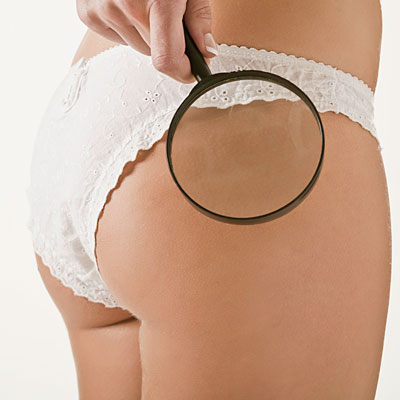
“Baby got back!” Sir Mix-A-Lot may have rapped these lyrics more than 20 years ago, but our fascination with bums still remains. In fact, from Iggy Azalea’s curvy derriere to Sofia Vergara’s ridiculously toned tush, behinds have replaced breasts as the It body part of the decade. But there’s no reason to worry if you think yours isn’t up to par: Whether your pain-in-the-butt concerns focus on health matters (sciatica, anyone?) or more cosmetic issues (hello, cellulite!), we’ve got them covered.
Problem No. 1: Sciatica
What it is
Pain (often located in your lower back or hip) that travels along your sciatic nerve, which runs from your lower back down through each of your legs. Most of the time, sciatica is due to a herniated disk, which bulges out and compresses the nerve. But sometimes it’s caused by piriformis syndrome, which is when the bandlike piriformis muscle (it extends from your sacrum to the top of your thigh bone) squeezes the sciatic nerve. You’re most likely to experience the first signs between the ages of 30 and 50. “Years of sitting can increase the risk of sciatica,” says Wellington Hsu, MD, professor of orthopedic surgery at Northwestern University Feinberg School of Medicine. “There is also a genetic component.” Sciatica can sometimes occur during pregnancy, when your expanding uterus can push against the nerve.
What it feels like
Anything from a dull ache to a shooting or burning knifelike pain to an electric shock.
Rx
A primary care doctor or an orthopedic specialist should be able to diagnose sciatica through a physical exam. Usually the condition improves with over-the-counter or prescription anti-inflammatories or muscle relaxants, stretching exercises or physical therapy. A cortisone injection might work for short-term relief. If your pain persists for longer than six weeks, you may need an MRI to pinpoint the cause.
Problem No. 2: Sacroiliac joint pain
What it is
Pain around the sacroiliac joint, located in your lower back where your spine and pelvic bone meet. While it’s common to have discomfort in the area during and post-pregnancy (as your pelvis widens to prepare for birth, ligaments stretch and tug on the joint, causing pain), many women experience it because of muscle tightness or weakness. Don’t ignore the hurt: It could mean that cartilage between the bones is wearing down, which can lead to arthritis.
What it feels like
Pain in the lower back and hip (often on one side) that worsens with bending or activity; it tends to get more severe after you sit for long periods and feels better when you lie down.
Rx
It can be diagnosed by your primary care physician or an orthopedic specialist with a physical exam and X-ray. Treatment is usually conservative: over-the-counter anti-inflammatories and, if needed, a cortisone injection right into the joint to relieve pain. The best prevention is a strong core, which helps take pressure off the joint by strengthening surrounding muscles. Talk to your doc about moves (such as planks and hip raises) to do on your own.
What the hole?!
If you notice blood in your poop or on the toilet paper, or itching and swelling around your anus, you may have hemorrhoids. The most common risk factor: constipation. Your MD can tell if you have external hemorrhoids (under the skin around your anus) by examining the area; hemorrhoids inside your rectum can also usually be diagnosed by a manual exam, but if there’s bleeding, you may need a colonoscopy or flexible sigmoidoscopy to rule out anything scarier, like colon cancer. Treatment is usually over-the-counter products with witch hazel or hydrocortisone to relieve swelling and/or itching, as well as soaking in a warm sitz bath. Also key: Slowly up your fiber intake to 25 to 30 grams a day, and drink lots of water. If that doesn’t work, your doc can perform an in-office procedure known as a rubber band ligation, where she places a band around the hemorrhoid to cut off its circulation (the band, and the ‘roid, fall off within a week).